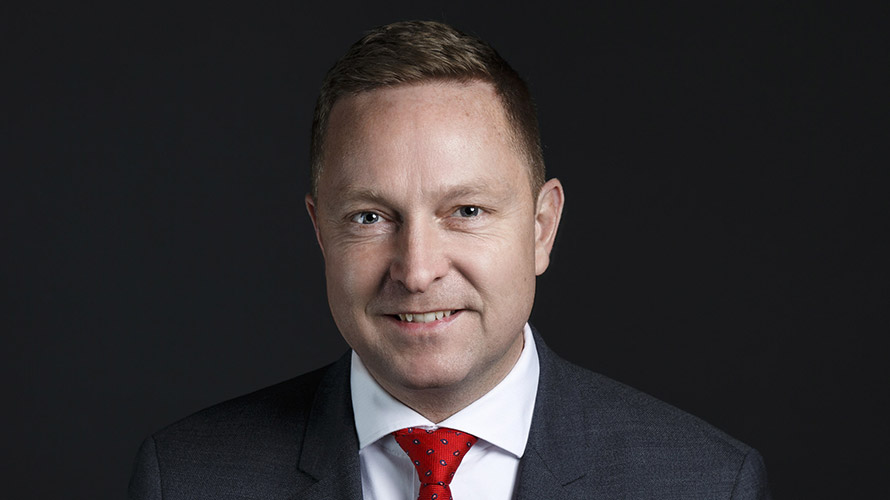Dan Scott
Head Multi Asset

Growing debt levels are indeed worrisom. Debt to GDP ratios have reached levels above 150% in some of the developed world’s countries. Learn why these high debt levels can be an issue, and whether we can count on an economic boom to solve our problem.

Even before Corona, the immense national debts in the eurozone was a huge problem: in view of the gigantic financial packages in the fight against the consequences of Corona and the standstill of the economies, they are now rising to immeasurable levels.

Head Multi Asset
Dan Scott verfügt über mehr als 20 Jahre Kapitalmarktexpertise über alle Asset Klassen und Märkte hinweg. Bevor der gebürtige Rheinfeldener (CH) 2017 als Deputy CIO und Head of Investment Office zu Vontobel stiess, war er viele Jahre bei der Credit Suisse und bei Kepler Equities tätig. Seine Karriere begann er Ende der 1990 Jahre als Journalist, zunächst bei Dow Jones und später bei CNBC in Frankfurt und Zürich.
Growing debt levels are indeed worrisome especially when one sees the numbers in aggregate. Even if one views the more economically significant debt ratios in relation to GDP, we still have some cause for concern. Debt to GDP ratios have reached levels above 150% in some of the developed world’s most indebted countries like Italy. These high debt levels can be an issue as they bring with them higher borrowing costs and can leave a country precariously exposed to unexpected swings in the inflation rate.
Yes, at the end of the day government debt is the collective debt of society. Currently the so-called “social contract” is being challenged as we are handing over this debt to the next generation.
Under normal circumstances future economic activity should be the basis for providing governments the income to gradually reduce their debt. The large amounts of fiscal and monetary stimulus being provided to the global economy at the moment is an effort to spark such economic activity, which will in the medium to long term help unwind the debt piles we are currently creating. It’s not at all unusual for central banks to issue debt in times of economic crisis or sudden shocks to the system. By the end of World War II, the US also had a debt to GDP ratio of over 150% which was then gradually worked off until it hit a low of 30% in the 1970’s. A post war economic boom was what laid the foundation for reducing the debt. Our current predicament is the result of debt taken on after the global financial crisis, the Eurozone crisis and now the shock from Covid19 lockdowns. Currently – it’s not so clear that we can count on an economic boom to solve our problem.
If interest rates were to remain low forever, we wouldn’t need to be concerned about the current debt levels. Inflation is unlikely to remain low forever however so we must consider other scenarios. A situation where we have a low amount of inflation combined with low real interest rates would in fact be a perfect paradigm for gradually working off our debt levels. The worst case scenario would be if we suffer a period of deflation as this would increase the real value of the debt. High inflation would also be a negative scenario as risk premia in interest rates would rise and debt servicing would become an issue. We don’t see either of these extreme scenarios as very likely. We believe that drastic measures such as a coordinated write-down of global debt or currency devaluation also are unlikely and won’t come into question unless it becomes apparent that governments can no longer service their debt obligations. Raising taxes on the other hand remain a viable short-term option for governments.
The situation poses challenges for investors. Especially for fixed income investors. The concept of a risk-free rate of return is increasingly a lost concept. Investors seeking yield will need to tap alternative sources to government debt. Navigating debt markets can be a daunting task and seemingly attractive yields are often the result of underlying credit risks. For long term investors, a balanced diversification across asset classes remains crucial. While government debt is likely to remain income free for the foreseeable future, fixed income as an asset class can still deliver returns. What is important is to have an active management that avoids the potholes of increasing underlying credit risk.
Die Corona-Krise bringt plötzlich auch Fragen aufs Tapet, denen wir uns bislang nicht stellen mussten – oder wollten. Wie steht es um meine finanzielle Vorsorge und Sicherheit? Unsere Wealth-Planning-Expertinnen und Experten geben Auskunft:
Frühpensionierung in Corona-Zeiten: Die 5 häufigsten Fragen
Brauche ich einen Vorsorgeauftrag, wenn ich verheiratet bin?
Pensionierung planen: Monatliche Rente oder einmaliger Kapitalbezug?
Für Selbstständigerwerbende: Vorsorge über die 2. und 3. Säule